The quarterdeck is a raised deck behind the main mast of a sailing ship. Traditionally it was where the captain commanded his vessel and where the ship’s colors were kept. Wikipedia
I am using this term to refer to a raised area on the stern of the Grazyna. The purpose of this is two fold .. one to give more depth to the area as this is shallow this being a waterline model and more importantly give a place to attach the bulwarks to.
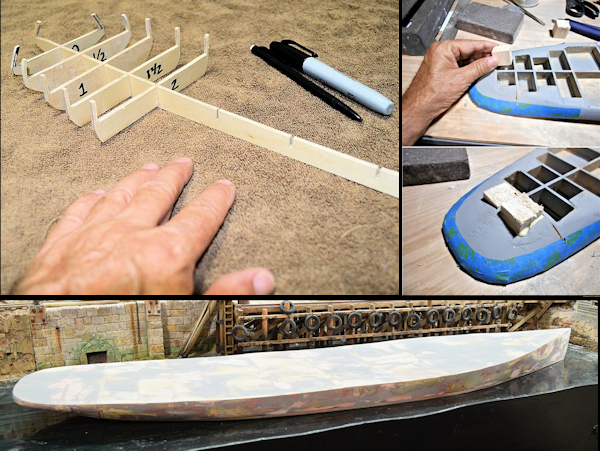
When I started this project years ago I started by making bulkheads from drawings showing hull lines and sheer plan. From this I made the bulkheads and keel and then filled in the spaces with balsa and expanding foam and sheet basswood. I only wanted a boat shaped water line object that I could later plate and/or plank as needed as this was just for a static display.
The problem later on is that this was/is very much organic in shape which means that trying later to add the quarter deck poses some difficulty.
Coming back later and trying to fit the raised stern deck/quarter deck to fit that organic shape takes time and some of the planning that I failed to do previously.
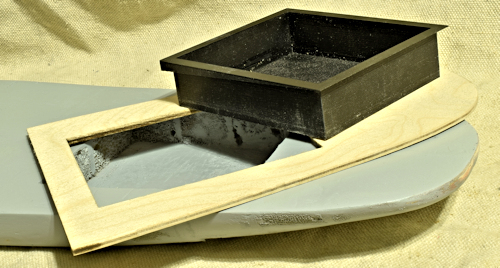
Tracing, Scanning and CAD: I traced the top of the boat onto cardboard, which I then scanned, brought into my graphic program where I took half of, mirrored to get the same shape on both sides, brought into Sketchup where I traced the outline. Created a DXF file that I imported into Lightburn and laser cut the quarterdeck. The results was oversized .. but .. the hole for the Engine room allowed me to use the Engine Room print to lock the hull and rear deck piece together and then I could trace around the deck piece and sand to that penciled line.
This is where I am as I type this. The CAD I created previously were really only good enough to laser cut out the raised deck as I have now sanded it to the pencil line I used the hull shape to create. The original plan was to offset the raised deck the thickness of the bulwark as a gluing edge. I am basically where I started except .. “perhaps” I can use this “fitted” raised deck to scan and get a good CAD file. THEN .. mirror the sides etc., cut a new raised deck then GLUE that to the boat and use bondo to blend everything together and THEN I can use that file to create a new offset piece.
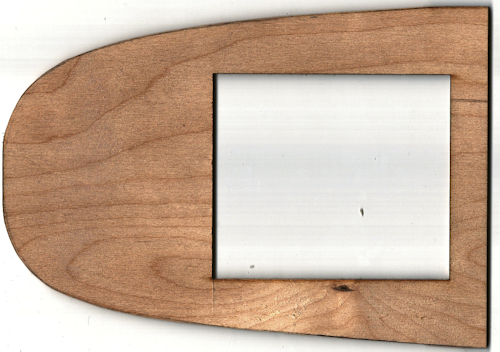
Take 2: Here’s the scan of the raised deck that I sanded to fit. While not crazily different, the sides are not exact mirrors of each other. The next step will be an attempt to fix that.
Not a bad scan … there is a bit of shadow cast but that is easily cleaned up in my graphics program.
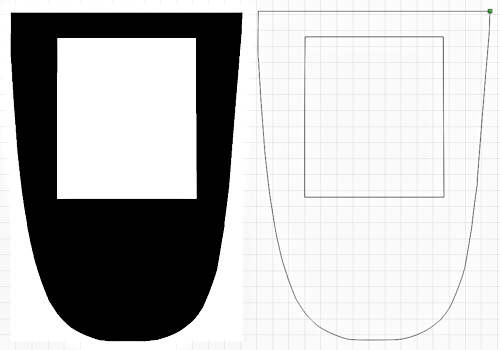
Paint Shop Pro, Lightburn and Sketchup: I brought the scan into Paint Shop Pro and cleaned it up then made all of the scanned part black and the rest white. This was for import into Lightburn.
In Lightburn .. screen capture to the left … I used the trace function and exported as a .DXF file.
Now imported the DXF file into Sketchup where I split the image down the center, took the left side which seemed more correct and cleaned up any remaining glitches and then mirrored to make a whole graphic. I adjusted the width as needed .. there was a slight difference due to all the various scanning, exporting and importing done. This will be glued to the stern and I will use bondo to blend it into the stern. I then made a copy and offset that 0.010″/0.254 mm to make the bit I need to glue the bulwarks to. This means that I will add another 0.130″ to the deck height but .. shrug .. this is all made up anyway. I took that same offset drawing and made a copy with etched lines (6″ Full-size .. in 1:48 made them 0.125″) .. I can use this to etch the planking into some 1/16″ or even 1/32″ basswood.
Lessons Learned :
- If you submit a black and white graphic to Lightburn it can trace the outline nicely which you can then export as a DXF file. If I can figure out how to convert the png/jpg into a Vector graphic it would be better. When I did the trace and zoomed in you can see the little wiggles in the line as it was from a scan of a hand sanded object. Some way to have software convert to smooth lines would be cool .. something to look into.
- Sketchup will import the DXF file which allow easier manipulation .. for me at least. I am sure you could do the same in Lightburn .. I am just really familiar with Sketchup. You can export back to DXF then to load into Lightburn. It’s a hack to be sure but it works.
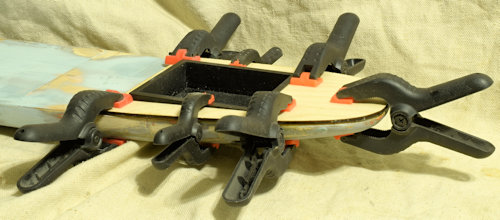
Gluing the raised stern deck down. I will let this set up .. find something else to do while the glue dries. I have a bad habit of rushing such.
